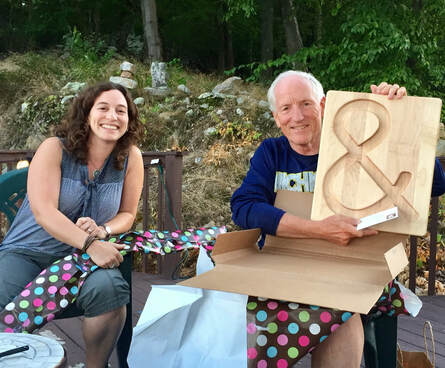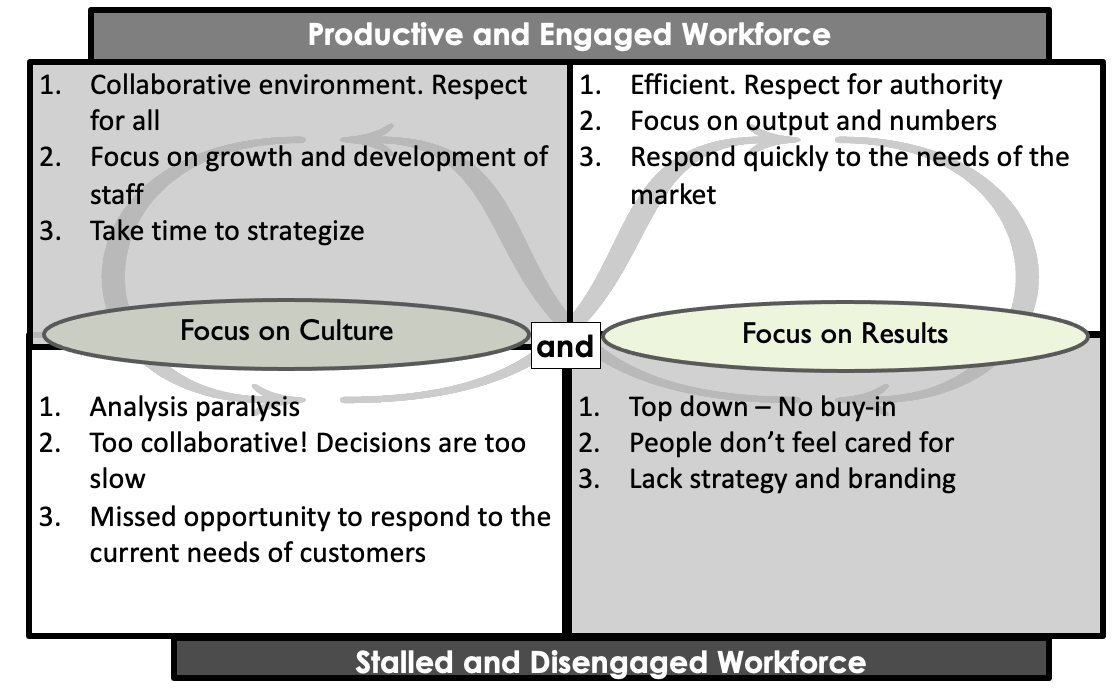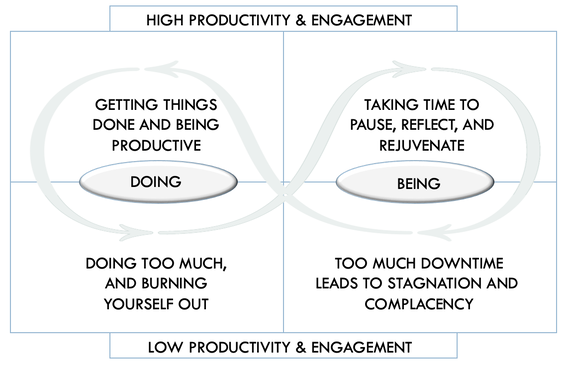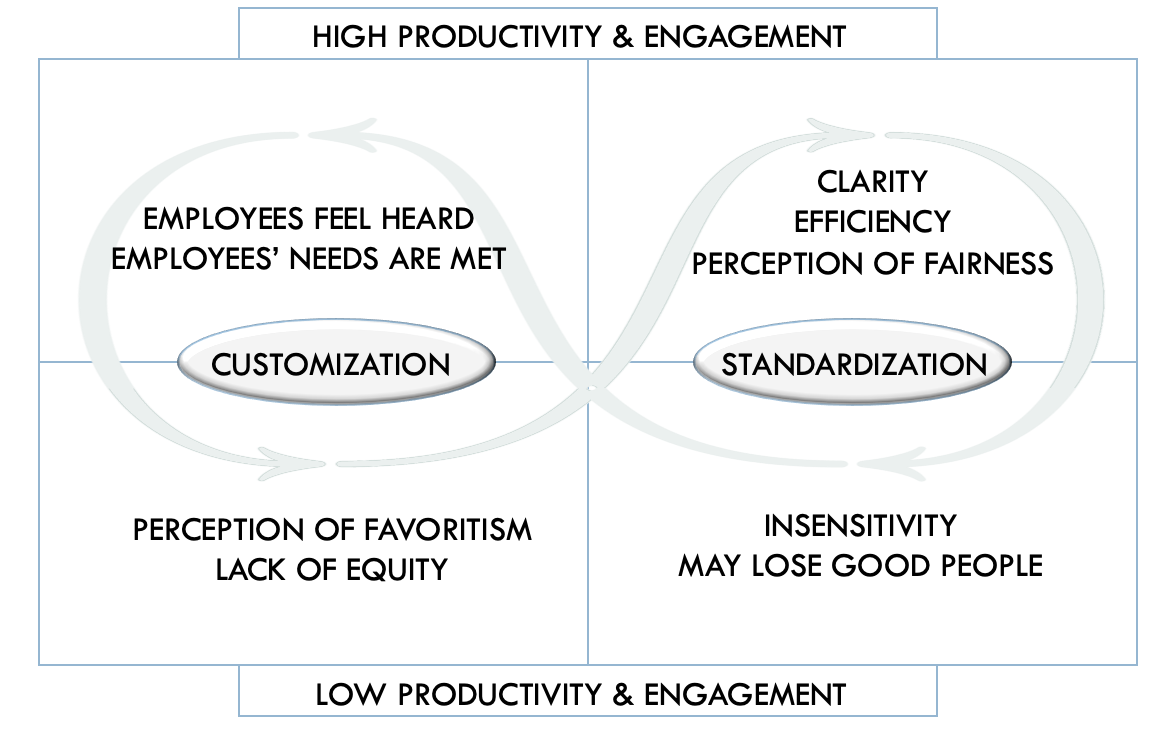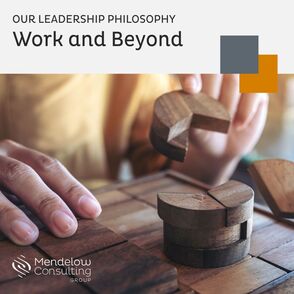 In my previous post, I talked about the things that great parenting and effective leadership have in common. In a nutshell, they both boil down to having a vision, inspiring others to be their best, leading by example, and building trust. So whether you are a parent managing kids at home or an executive developing a team at work, you are a leader. In the end, leadership skills are life skills. The more aware and intentional you are about how you show up as a leader in different life settings, the more effective (and happy) you’ll be in life – instilling a sense of purpose and well-being in others around you. So how do you bring the science of leadership to life outside the workplace? You can take the principles of Connected, Valued, and empowered from the Dynamic Engagement model and apply them to any domain of your life. Let’s take parenting as an example. Feeling connected. Kids have a natural psychological need to connect and belong. When it comes to family dynamics, the sense of belonging and the feeling of being cared about are the most obvious. However, with everyone's busy schedules, it's sometimes hard to carve out time to connect. Make it a habit to spend some quality time with your little ones. It doesn’t have to be a long time period. All you need to do is be fully present (i.e., turn off your devices). Whether it’s a family dinner, a date night with the kids, bedtime talks, or walks in the park, be there for your child, listen to them, and take an interest in what’s happening in their life. Feeling valued. Children want to be recognized for their abilities and contributions. Consider how they contribute to the family, regardless of their age (e.g., they add humor, keep everyone on schedule, are always sharing/looking out for someone, bring energy, etc.). Notice their everyday achievements, especially when they are working hard toward a goal or doing something out of the ordinary. Feeling empowered. Kids also want to feel that they have a choice. Based on their age, think of ways you can allow your children to make their own decisions. Also, allow them to perform tasks independently, without hovering nearby and giving instructions. Don’t rob your children of the opportunities to be autonomous. I know it’s easier said than done, as applying leadership skills does require self-awareness and intentionality. But when you continuously practice leadership behaviors across domains, you will see how your life will change for the better. I’m curious, how are you already honing your everyday leadership skills?
0 Comments
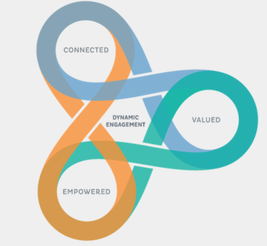 If leadership is defined as the process of social influence that maximizes the efforts of others and leads to positive outcomes, should it be limited to the workplace? I believe that leadership goes way beyond the office walls. Practicing leadership skills in everyday life can help build better relationships with family, neighbors, and community members. The leadership principles of Connected, Valued, and Empowered from MCG’s Dynamic Engagement model can also assist parents in their attempts to become nurturing mothers or fathers. At first sight, this might sound counterintuitive as parents may believe they need to leave all work-related skills at work. However, applying these principles to the parenting arena is highly beneficial, as raising children can be compared to leading others in the business setting. And here’s why.
We’re not saying to treat your employees like children and treat your children like employees, but rather notice how you show up in challenging situations both at work and at home. What better way to grow as a leader than to experiment with leadership behaviors across all domains of your life? Do you, as a parent, think of yourself as a leader? 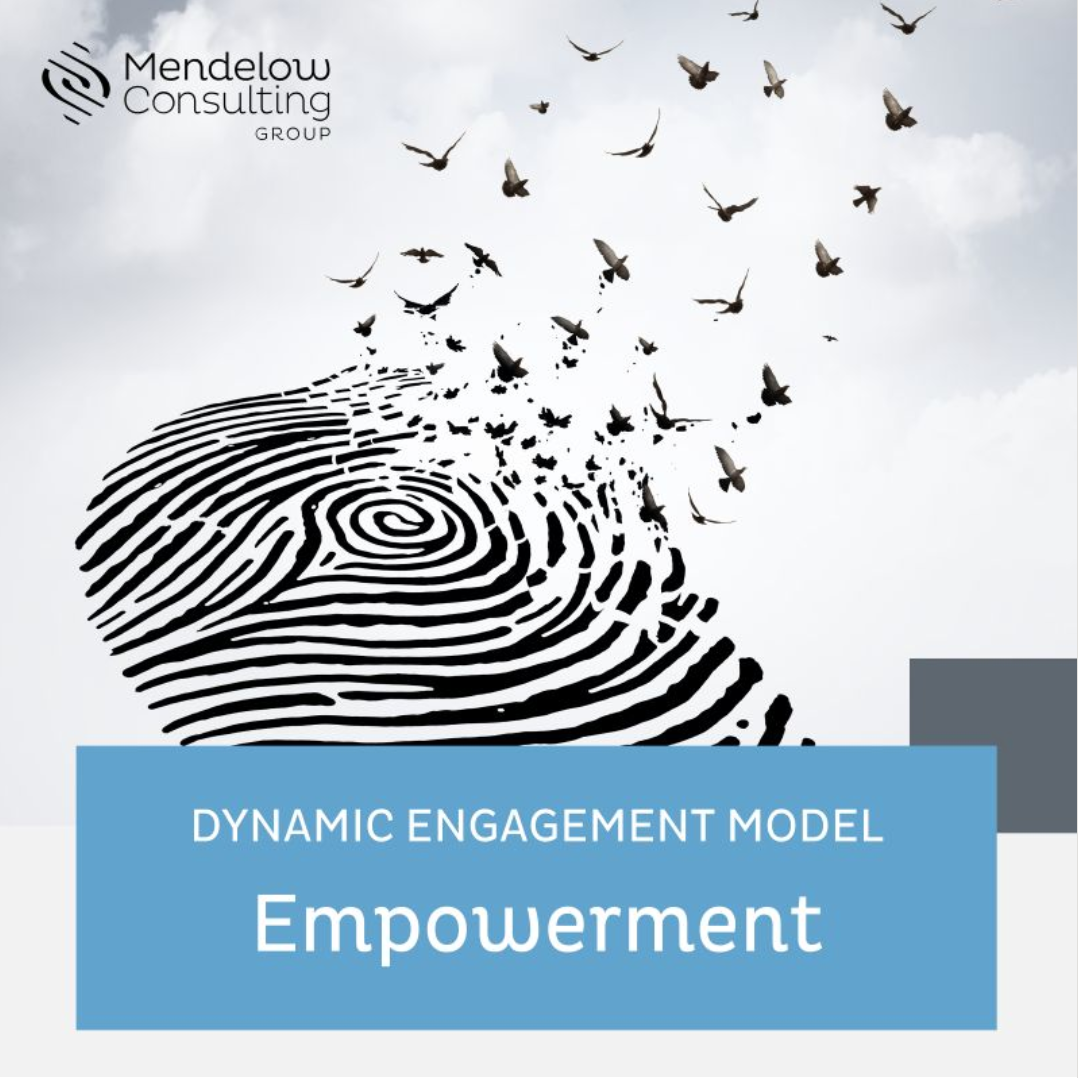 Have you ever been called a control freak? Many of us associate the word “control” with something negative, and we don’t really like dealing with controlling people. As leaders, we’re told not to focus on controlling things or others but rather focus on stepping back and letting others take the reins. Where does this sense of control come from, and is it really all that bad? Autonomy is a psychological need based on the idea that people are empowered when they experience a sense of choice and endorsement in a task (Deci and Ryan 2008). This means that individuals gain a sense of intrinsic motivation from engaging in tasks. There are many theories as to where this comes from in human evolution, one being the most obvious that when we are oppressed, we suffer, and humans do everything in their power to avoid pain and suffering. In the Psychology Today article, “The Desire for Autonomy,” author Alex Lickerman, M.D., states that we are hardwired to desire autonomy. Even internal pressures like guilt or shame, let alone external coercion, affect a “healthy” sense of control. That’s why empowering is all about giving your employees both decision-making responsibility and ownership. When people feel they have a sense of autonomy, they have an increased sense of well-being. You can strengthen your team’s autonomy and empower employees by delegating familiar, everyday decisions to those closest to the core question or issue. By doing so, you can also take a lot of decision-making off your shoulders! Being a leader does not mean you are the sole person that has to make all of the decisions. You have a team of highly qualified, intelligent people… So leverage them! While providing autonomy is positive, try not to fall into the trap of stepping back too much. When this happens, task leads may veer in the wrong direction or make decisions that aren’t aligned with the overall strategy. Remember that delegating tasks is not an “all or nothing” phenomenon. Based on the other person’s skill set, experience level, confidence, and past successes, you as the leader can determine the level of frequency required to check in along the way to ensure the project is moving in the right direction. Also, keep in mind that the task lead may have a different approach or process, but you’re checking in on the end results. Here’s a challenge for you. Next time, during your 1:1 meetings with your direct reports, ask them, “What am I currently doing that you feel you could and would want to pick up?” You don’t have to agree to it on the spot, but it opens the door for a conversation. You’ll learn about their areas of interest for their own growth and potential areas for you to let go of. It’s amazing what happens when you let your team guide you into the area of autonomy and empowerment. If you give it a try, let us know what happens. Why is it important to feel valued and appreciated at work? And how to make that happen...8/31/2022  In my previous post, I talked about belonging, the sense of purpose derived from feeling connected to something bigger, and why belonging is not only good for employees but for businesses too. Our psychological need to belong goes hand in hand with a need for appreciation. As we contribute value to the whole, we want to be recognized for it. We need those around us to validate our ideas, achievements, or opinions. In other words, we want to know what we do matters. William James, who is often referred to as the father of American psychology, said that the deepest principle in human nature is the craving to be appreciated. Genuine appreciation lifts people up and gives us a sense of security and energy. Moreover, gratitude and recognition activate “gratitude” circuits in our brain, releasing dopamine and serotonin - the neuro-chemicals linked to intrinsic motivation in goal accomplishment and better mood. And how does feeling appreciated translate into performance at work? A 2013 survey of 12,115 workers worldwide organized by The Energy Project and the Harvard Business Review found that employees who have more supportive supervisors are 1.3 times as likely to stay with the organization and are 67 percent more engaged. Moreover, employees who derive meaning and significance from their work reported 1.7 times higher job satisfaction and were 1.4 times more engaged at work. Research by Emily Heaphy and Marcial Losada indicates that the highest-performing teams boast a 5.6 ratio of positive comments, i.e., nearly six positive comments for every negative one. But the average for the low-performing teams was 0.36 to 1, with almost three negative comments for every positive one. These findings conclude that appreciation and acknowledgment are part of the secret sauce for building strong, thriving teams. However, it’s important not to confuse this with empty praise that you often see with corporate rewards programs. Appreciation and acknowledgment can be as simple as a two-sentence email acknowledging someone’s efforts on a specific task and sharing the positive impact. You’d be surprised how much that acknowledgement means to someone, especially those working remotely or those less visible in the organization. How is appreciation promoted in your organization?  Do you ever catch yourself thinking about the cliques or groups that are formed at work? Sometimes it may feel like your manager hangs around the same offices or plans golf outings with the same people. It may feel like favoritism. At the surface level, you may feel silly feeling a little jealous or excluded but underneath the surface, there’s a very good reason why this radar is going off in your head. When you’re in the “in-group,” you feel that you belong. But why is the sense of belonging important? It’s been deeply-rooted in our DNA. In her paper The origins of belonging: social motivation in infants and young children, Dr. Harriet Over states that, back in the day, humans could survive in adverse environments and gain access to food, shelter, and protection from attack only through cooperation with other tribe members. Exclusion from the tribe meant inevitable death. Today, humans can survive even in individualistic cultures, and our "tribe" is limited to our immediate family and colleagues at work. But much like thousands of years ago, we yearn to be accepted and included by those around us. The sense of belonging makes us feel happy and fulfilled. Belonging to a group also increases our self-acceptance, which is an important factor in coping processes, especially in difficult situations (Thoits, 2011). Furthermore, people's resilience is directly and persistently influenced by a sense of belonging (Scarf et al., 2016). Companies, too, can reap significant bottom-line benefits when employees feel like they belong. According to the 2019 Harvard Business Review article by Evan Carr, Andrew Reece, Gabriella Rosen Kellerman and Alexi Robichaux, high belonging was associated with a 56% increase in job performance, a 50% reduction in turnover risk, and a 75% reduction in sick days. For a 10,000-person company, this would result in more than $52 million in annual savings. MCG’s Dynamic Engagement model is built around the sense of belonging, or feeling connected, as one of the three foundational needs, along with feeling valued and empowered. I’ll elaborate on the other two needs in my next posts. In the meantime, I’m curious what does belonging look like in your workplace? And, what do you do as a manager to create an inclusive environment?  Competition and collaboration. Work and rest. Candor and diplomacy. The business world is full of polarities to handle. Yet, is there a way to do it right? According to Dr. Barry Johnson, the best way to manage polarities is to supplement either/or thinking with a both/and approach. While ‘either/or’ thinking requires you to choose between the two polarities, ‘both/and’ thinking allows you to navigate between them freely. Now, to better understand how polarities work in practice, think of Candor and Diplomacy. I believe, as multicultural and diverse workplaces emerge daily, it is imperative to consider. What defines a candid person? Candid people value being direct and honest in conversations and letting others know where they stand. However, if they overdo it, they may unintentionally push people away and others may not feel comfortable speaking up. Upsides: Colleagues know where leaders stand. Downsides: Colleagues might feel alienated and afraid to voice their own opinions. Fears: Not being truthful and maintaining integrity. What defines a diplomatic person? Such people typically value learning from diverse perspectives and engage in consensus-driven conversations. However, if they overdo this approach, they may end up in analysis-paralysis where people talk in circles and decisions are not made. Upsides: Colleagues are comfortable sharing their opinions. Downsides: There is no clear decision or action. Fears: Damaging relationships or others feeling alienated. Candor VS Diplomacy: Which one is best? Everybody likes clarity. Yet, anchoring yourself to one of these poles will not do any good. If you do, you may have short-term success without any long-term gain or worse, will end up with a team who feels deflated and unmotivated. Understanding that both poles have pros and cons will help you find a "both/and" solution. You need to acknowledge the downsides of your preference and the upsides of the other side. Leveraging both candor and diplomacy may provide a structure for healthy debate where people candidly share their points of view and are also curious and open to acknowledging and validating other perspectives. This approach of leveraging the upsides of both poles allows for the greatest outcomes to be realized. There are an infinite amount of polarities that exist in the leadership space: Mission and Margin, People and Task, Delegate and Do it Myself, Reactive and Proactive… No matter what polarity you find yourself in, to embrace a both/and mindset, one must increase their tolerance for discomfort and risk. One must accept vulnerability and address their own fears to achieve optimal results. What polarities do you often wrestle with? What creative tensions show up for you as a leader? How to build and maintain a strong organizational culture, and why you need to start today8/31/2022  How significant is your company's corporate culture compared to its numerous strategies, competing tasks, and priorities? If you're a small startup with a few people united by a common goal and values, you might not think about culture much. Furthermore, you may be unaware of its importance. However, as your business scales and outnumbers 150 employees, you may come to a point where you feel that the way you do things is not being passed on to all new hires, and your culture is diluted. Many of MCG’s clients come to us for advice on how to hold onto their culture as their business grows. And no surprise here – a strong, unified culture allows businesses to identify and differentiate themselves from competitors, attract talent, and drive employee engagement, which serves as a foundation for better business outcomes. Gallup’s studies across 192 organizations showed that work units in the top quartile in employee engagement outperformed bottom-quartile units by 10% on customer ratings, 22% in profitability, and 21% in productivity. Investing in your employees and culture does pay off. But where to begin the journey of designing or rekindling a great corporate culture, especially when your business is scaling? Here are a few best practices to consider.
Although following these strategies may sound challenging, dedicating your time and resources to maintaining a strong organizational culture is vital to improving performance. Where is your organization on its journey?  Whenever your team members hold conflicting opinions on an important business issue, how do you ease tension and come to a decision? The ways of resolving such situations I hear about include trying to reach a consensus through voting or by accepting the most reasonable point of view. Yet, when an issue seems unsolvable, organizations may end up asking a senior executive to step in and impose a solution or postpone decision-making altogether. However, leaders with good conflict management skills often see a bigger picture at play. They see both the upsides and downsides of each side of the conflict and try to find solutions that leverage both upsides. This conflict-solving strategy is the most effective as it looks at problems through the lens of polarity thinking. Polarities are seemingly opposing yet interdependent energy systems supporting each other. For example, light & dark, change & stability, individual freedom & common good are equally important in life. When leveraged well, those energies create harmony. Yet, we’re only human and tend to get stuck in a binary way of thinking – “Should we do X or Y?”, “X is good while Y is bad”, etc. What comes out of it, and how can we navigate the challenge of great dilemmas? Barry Johnson, the author of And: Making a Difference by Leveraging Polarity, Paradox or Dilemma, says that tying effort to one polarity almost guarantees failure because of the inevitable problems arising from focusing on that polarity alone. For example, by focusing on cost only within the interdependent pair of “cost efficiency” vs “service excellence”, we are likely to lose customers because of poor service. Therefore, it’s crucial to make a shift from “either-or” to “both-and” thinking. Teams should acknowledge the opposing view and be open to the fact that the other party has something to offer. However, when one is at odds with another, we often see only the downsides of the opposing view. It takes an open mind and a level of leadership maturity to engage with the opposing party & the bigger picture. To leverage polarities, Johnson provides the Polarity Map™ – a tool that allows reframing problems. To fill out a polarity map, teams put down the seemingly opposing views – representing two poles. In the upper quadrants, members write the positive results made possible by focusing on each pole. In the lower quadrants, they come up with the negative outcomes that happen when over-focusing on each of the poles. For great results, companies need to go after the benefits of both poles and minimize the downsides mentioned under each of the poles – instead of focusing on whose opinion is better. How often do you get caught up in “either-or” thinking? How do you come to an agreement when faced with opposing views at work or in family situations?  We all know exercise is good for the body, but are you also exercising your brain? If ‘gray matter’ matters to you, do you rely on brain-training apps to keep your mind sharp? The MCG team has looked into research conducted on brain-training apps and cognitive decline prevention, and these some the science-based findings that I thought you might find interesting. While there are dozens of apps that promise to sharpen memory, improve cognitive function, and hone attention and focus, scientists say that such claims may be exaggerated. According to the scientific community of the Stanford Center on Longevity and the Berlin Max Planck Institute for Human Development, there is no compelling scientific evidence that brain games reduce or reverse cognitive decline. While it is true that some brain games may improve specific aspects of behavior and can even change related brain structures and functions, they do not always translate to enhanced real-world broad abilities. When people perform a particular brain game, their performance on that specific task does improve. However, it does not lead to a general improvement in memory, thinking, or problem-solving. For example, doing crossword or Sudoku will make you good at doing those puzzles, but it doesn’t improve overall brain function. Although scientists say that cognitive-enhancement games are no magic bullet, many app users consider such games to be great brain boosters. A 2016 study published in the Proceedings of the National Academy of Sciences (PNAS) suggests that the positive results from brain games may be explained by a placebo effect. However, some studies on the efficiency of computerized tasks do inspire hope. Findings from the COGITO Study reveal that younger adults who practiced 12 different tasks for 100 days showed general improvements in their abilities of reasoning and episodic memory – and some of the positive changes were seen two years following the study. In other studies, older adults have reported that they felt better about everyday functioning after cognitive training. And the greatest news is, that because our brain is remarkably plastic, even an aged brain has a capacity to change. In the article titled The aging mind: neuroplasticity in response to cognitive training (see article), Denise C. Park says that the human mind is malleable throughout the life span. By training your brain like a muscle, you can reverse its decline. What’s more, ‘brain fitness‘ can be enhanced with physical exercise, learning something new (like a foreign language), and new experiences. So what do we make of all of this contracting evidence on training the gray matter in our brains? Our conclusion, for now, is that brain training games won’t do any harm but if you’re looking for a real boost, find experiences/activities that are intellectually challenging and do not become a rote process. What’s your experience using brain training apps?  One of my favorite sayings is “When your story stops working, make up a new one.” I honestly don’t remember whose wisdom I am repeating, but it is so powerful on many levels. First, it implies that we are constantly making up stories to explain the people and the world around us. Second, it puts you in the driver’s seat as the chief storyteller. The world does not happen to you. Rather, you get to create the world around you. The book Subliminal by Leonard Mlodinow talks about how our brains are continuously taking in stimuli and filling in the gaps to make meaning and constructs. Everything we observe is literally made up in our minds. So, what is real? When I listened to the recording of last month’s book discussion on Sapiens by Yuval Harari, the facilitator of the session (and good friend), Tommy Zarembka really got us thinking. Tommy introduced the concept of “imagined order.” Yuval describes imagined order as “based neither on ingrained instincts nor on personal acquaintances but rather on belief in shared myths.” A few coaches on the call commented that they help their clients step away from being in the myth and notice the myths in a different light. This approach helps clients change their mindsets and achieve new results. For example, if someone believes a myth that they’re not good enough and will never succeed, they may begin to focus on the times when they were successful and begin to disrupt this myth about themselves. As the coaches were explaining this concept of disrupting a myth, Tommy asked, “So coaches, let me ask you, are you saying that you’re helping your clients reimagine another imagined myth?” Brilliant question! To which I say, “Yes!” It’s all made up in our minds anyway, so why not choose the story or myth that is going to bring you the most joy, calm, and happiness? How do you change your story? This notion of being able to create a new story is so simple, yet extremely powerful. This can change someone from feeling helpless to hopeful. This technique, if you can call it that, not only works to help you change your own view but can also work when dealing with ‘difficult’ people around you. Many years ago, I was co-facilitating training for a group of 20 people, including one woman who had a very negative disposition. From the moment she walked in the training classroom, the coffee was too cold, the room was too hot, she had to take the bus home because of car troubles, etc. It was an endless complaint session, and we still had 20 minutes before the workshop even started! I turned to my colleague and said sarcastically, “This is going to be a fun day.” To which my colleague replied, “Must be hard to live that way.” My story about this person is that she was a complete grouch and poor me was going to have to manage her negativity all day while trying not to drain my energy in the process. My colleague, however, choose a different story. One of empathy, to think how much energy the woman must spend worrying and noticing and absorbing all the negative things happening to her. Hearing my colleague’s story, my entire attitude towards this ‘difficult’ person changed. Suddenly, she wasn’t my problem to own, manage or try to fix. Instead, I felt bad for her, but allowed her to own her own negativity. I was able to let it go and focused on the other 19 people who were very engaged and ready to get the day started. The best part of our imagined order or myths, as Yuva Harari labels it, is that it is just that, imagined. What stories are you holding onto that no longer serve you? What new story are you ready to make up? 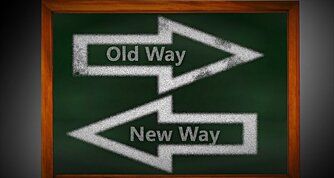 “Stop trying to change hearts and minds. Change the behavior!” This is the advice guest speaker and author, Minal Bopaiah, shared during our CliffsNotes Book club session last month. Minal was addressing change in DEI and speaking about what works in her experience. For me, being trained as an Organization Development consultant for 25+ years, this was a complete “mind blown” moment. We are trained to focus on mindset shifts to obtain sustainable change. The thinking is, when you view the world differently, you’re willing to access new/different behaviors. Minal’s point was that most DEI efforts are intended to change behavior, norms, and ways of interacting. However, it may take ages to win some people over with their “hearts and minds” on certain DEI topics, and some may never agree! But, if they can agree to change behavior to align to the new values and expectations, then that’s progress. I’m not ready to ditch the whole mindset shift thing completely, but I understood her point. It got me wondering if sometimes I overemphasize the importance of a mindset shift to the neglect of behavior change. The Challenge: Getting Better at Time ManagementTake time management as an example. Whether you are an executive who needs to learn to get out of the weeds, a new parent who is suddenly juggling a career and a young family, or someone who is simply poor at time management, getting better at time management is a change that many of us would love to make a reality. This topic touches us all, and it’s one that requires a “tune up” from time to time over the course of your career. In meeting with clients recently, I am finding that many organizations are taking a fresh look at their processes and group norms for in-office days, work travel, and collaboration overall as their organizations are returning to the office after extended telework due to COVID. The Key To Improving Time Management: Look at Your SystemsAs I reflected further, I realized that some of the best strategies that I use to manage my own time have required changes to my everyday processes and behaviors. Almost two decades ago, I took a course called “Getting Things Done” with the David Allen Company (No, I don’t get a commission). I learned some basic email tricks in that program that I still use to this day! Here are a few:
If you’re looking for sustainable change or buy-in over time, I still believe that mindset plays a large part and, focusing on small actionable behaviors are valuable. It could be exactly what you need to get the momentum going. Still Unsure Where To Start? Here is Some InspirationI recently read a McKinsey article with the best title ever, “If we are all so busy, why isn’t anything getting done?” It’s a great quick read that offers some recent examples of how organizations have rethought processes and implemented “radical” ideas like no-meetings days. One of my clients actually implemented this idea and they went one step further, they removed meetings for one FULL WEEK! True story! Is it time to re-imagine how you work?
What small behavior shifts have you made that have made a big impact? “I feel like I am walking on eggshells.” This is something I commonly hear from clients who are afraid of saying the wrong thing in a work setting. Even the most seasoned leaders want to avoid missteps, and as a result they tend to avoid conversations that feel “risky.” Of course, this is at odds with what works in many high-functioning organizations—on the one hand, open, respectful dialogue about sometimes “hard” topics, and on the other, the psychological safety that allows for people to feel comfortable opening up, and being vulnerable. I was thinking a lot about the “eggshells” at our recent CliffsNotes Book Club meeting. Last month’s book was Subtle Acts of Exclusion, by Tiffany Jana and Michael Baran. The title of the book is the new phrase for what we previously called “micro-agressions.” The newer phrase avoids “micro” which can mean insignificant, and “aggression” which can imply the intent to harm. With acts of exclusion, it’s not about the intent, it’s about the impact. In the book, the authors push us to think about the risks of speaking up versus not speaking up. (And that’s where you crunch the eggshells.) In my work with leaders at all levels over the past three decades, I have met many big-hearted, capable people who avoid such conversations. Many things can get in the way of the kinds of conversations that may seem awkward, but that lead us to deeper, more meaningful connections. Here are three common barriers, and ways to address them. Tips for Leaders – Avoiding or Addressing Subtle Acts of Exclusion 1. “I want to be authentic at work, and I feel I am being silenced or cannot talk about certain topics.”
Reality check: It’s not about limiting your authenticity—it’s just that you can’t be a jerk, at work or anywhere for that matter. Acts of exclusion are seemingly small comments that can make others feel left out, or less than. For example, going around the room and asking “how many children do you have?” versus “does anyone else have young kids?” is a simple reframe that can set the tone for group dynamics in that conversation and beyond. It’s okay to mention your own children. It’s not okay to assume all others have children. Decades ago when we talked about “political correctness” people took away the understanding that they must circumvent certain personal topics or discussions in a professional setting. And this can make people feel as if they cannot be themselves. I would argue that in most places of work you are encouraged to share about yourself, provided you do not impose your values on others and provided you avoid making assumptions about others. For example, it’s wonderful to wish a new mom “Happy Mother’s Day,” but perhaps avoid wishing all women the same. Just pause and think first. 2. “Sometimes I just don’t know what to say.” When something comes up that could offend you or others, something that you know you “should” respond to, but you are speechless, what do you do? I find that it helps to have a reaction prepared—to avoid a speechless moment. A question such as, “What makes you think that?” can draw the person out, without condoning what they have said, and give you time to regain composure and react. At Book Club, we talked about how terrible it feels to be caught off guard, and how it can be especially hard to advocate for someone in response to an act of exclusion you might be witness to, but that might not directly impact you. As a group, we brainstormed possible phrases to have ready, for when you need them. For example, here are a couple to keep in your back pocket.
These phrases buy you time, point toward the issue, and open up a discussion on what transpired. They hit the “pause” button on the conversation. They also allow others time to chime in. 3. “I don’t want to make it worse, and I know I have blind spots.” As a leader, people are watching what you do and say—and what conversations you avoid. You are the keeper of the culture and you are modeling what leadership means in your organization. That said, this is an honor not a burden. I always say, it’s not about perfection, it’s about course-correction. Having the courage to open up a discussion that may feel awkward or messy is part of professionalism in today’s world. And not doing it could have a long-term negative impact on the relationships and team dynamic. My advice? Acknowledge the challenge, demonstrate that you’re in learning mode, and ask for feedback. Say something like, “This is out of my comfort zone, but the conversation is important. Can we talk about this for a minute?” For more tips, and notes from the book club discussion/highlights from the book, head over to the portal.  The struggle is real. So many of my clients right now are focused on navigating re-entry to the office. For some, it’s about “active inertia,” the notion that it’s hard to shift back to picking up dry cleaning and paying for tolls after so many months of working from the dining room table in your sweat pants. For others, there are very real concerns about COVID, the variants, etc.—and very different levels of comfort with health and safety protocols. As I reflect on the push / pull factors, it’s noteworthy that many of my clients are doing just fine working remotely. They have gotten into a good groove with collaboration tools, and engagement has not suffered. Yet what I am hearing is that many organizations are concerned about the long-term effects that remote working will have on culture. There’s fear that new hires won’t acclimate, and that over time people may lose their sense of connection to each other and to the organization. There’s something about in-person face time that serves as glue. And there’s fear that things are getting unstuck. How to look at a complex challenge—map it When faced with a layered and complex challenge, I know it's time to pull out one of my favorite, most versatile tools, the Polarity Map™. Polarities are a way to help you reframe a “problem” and consider the upsides and downsides of the two seemingly opposing forces at play. In some cases it’s helpful to do a simple “pros and cons” list, and consider upsides and downsides of a choice. Polarities, however, are more complex and nuanced, and they get you out of “diagonal thinking,” an either/or mindset, and into a “both/and” mindset which opens up creativity and possibilities. At CliffsNotes Book Club this month, the architect of Polarity Thinking™, Dr. Barry Johnson, spoke about his book And: Making a Difference by Leveraging Polarity, Paradox, or Dilemma. For a primer on polarities, find notes and the recording on the portal. Also visit Barry’s Polarity Partnerships site. Laura Mendelow and Dr. Barry Johnson When considering the return to the office, what is the polarity at play Two years into the pandemic, the polarity I am helping many clients see and navigate is a focus on culture versus a focus on results. For many, the central question is: How can you scale culture -and- maintain results -all while- we are navigating hybrid work and return to the office (whatever that looks like for your organization)?
As we consider return to the office, I mapped the two poles as ‘focus on culture’ and ‘focus on results.’ Ideally, we want to spend more time in the ‘upsides’ of each, where you’re productive -and- engaged. The positives of focusing on culture are what you’d expect to see among the “great workplaces” award winners, namely:
The positives of focusing on results are what investors want to see, and also make for stability and job security. These include:
Understanding the polarity at play, and what the upsides and downsides of each pole are, will help you navigate the flow between the two poles. As I talk with leaders about the map, it allows the conversation to shift away from the rules and COVID protocols, and focus on the bigger picture goals, and how each person contributes. It’s a plug-and-play discussion starter for a team meeting and can spark a wonderful idea-storm with solutions specific to your organization. Let me know how it helps your group! At last month’s book club meeting, we discussed a book that was out of the ordinary for our “CliffsNotes” Book Club that typically focuses on business books. We featured Braiding Sweetgrass Indigenous Wisdom, Scientific Knowledge and the Teachings of Plants by Robin Wall Kimmerer. On the surface, the book offers no immediate lessons for CEOs or up-and-coming frontline leaders. Yet we were all mesmerized and found immediate ways to apply it to our work as coaches, facilitators, and leaders. Most interestingly: the book was written in 2014, but it’s recently getting a lot of attention—and it’s now a best seller.  The book is beautifully written and has many great lessons; however, what captured my attention is the larger narrative. Why are so many people paying attention to this book, and why now? It's a book about lessons from indigenous people and Mother Nature. How is it that now we are finally waking up and acknowledging the beauty, strength, and benefits of connecting with earth? One reason that I'll offer, and of course this is just a hypothesis, is that in this fast paced, highly-technical world, with advances in Artificial Intelligence and Machine Learning, we want to get back to our roots. We’re craving it. Through the lens of polarity-thinking, I see the tensions of “Being” and “Doing.” Perhaps as a society, we're (finally) recognizing that we're leaning too far into the “Doing” and have ignored the “Being?” Here's what it looks like on a polarity map, with "Doing" and "Being" as the two poles. Being & Doing – Through a Polarity-Thinking Lens Let’s look at “Doing” and “Being” from a polarity perspective, and consider the upsides and downsides of each end of the pole. On the one pole of "Doing,” people are collaborating with partners across the world and dreaming up innovations they never knew were possible. New AI systems allow us to work faster, smarter, and more efficiently. We have WiFi, we connect to work on all of our handheld devices, and we have the flexibility to work from home, which reduces commute time and further increases productivity time! There are so many upsides of “Doing!” That said, we've already seen, and many of us feel, the downsides of overusing this pole... We're burned out. Many of us have no boundaries from working from home. It’s a 24/7 work week, we experience information overload with access to news as it happens all around the globe, and we’re expected to be everything to everyone. There’s no pause for life’s mishaps and for many a 3-day weekend is a “vacation.” Perhaps the pull and appeal to this book is that we're reaching out to the other pole. We’re connecting with the appeal of “Being.” The upsides of “Being” are about coming back to our roots, slowing down, appreciating the beauty right in front of us...A focus on “Being” redirects you to not put all of your energy into improving, fixing, changing, but instead to carve out time for thinking, observing, and paying attention to appreciating what is. It’s about leveraging what already exists—and connecting back to our purpose and our meaning. Sometimes all it takes is finding a “Sit Spot.” There was an exercise I once heard of called having a "Sit Spot." This is a spot in nature, outside your home or place of work (somewhere you visit regularly) and for 5, 10, or 15 minutes a day, you just sit in that spot and observe. You may notice the same squirrels running by, or the same song that birds sing to alert others when you walk out the door, or the way things look different based on the time of day or weather. By just simply sitting and observing you recognize all that is around you. You share this home with others; it is just as much their home as it is yours. “Being” also has downsides. Perhaps we don't operate in this pole as often because of the fear of leaning in too much. We fear becoming complacent, lack of energy, no ambition, no drive, etc. How do you leverage the best of “Being” and “Doing?” With a polarity-thinking lens and Mother Nature lens on, I wonder how we can best lean into both ends of the poles, to get best benefits of both “Being” and “Doing?” Most of us are already great at "Doing" but what are some ideas to lean into "Being." Here are a few ideas to start. Many came from the Braiding Sweetgrass discussion at Book Club. How to Leverage “Being” at Work
How to Leverage “Being” at Home
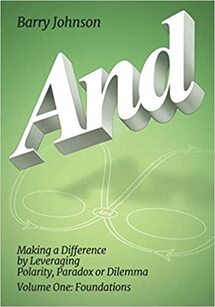 If you are interested in learning more about polarity-thinking, join our April Book Club session (April 13, 2022). We are so delighted to have the author, Dr. Barry Johnson, join us and engage in dialogue on his book 'And: Making a Difference by Leveraging Polarity, Paradox or Dilemma.' To register, visit the Book Club portal.  Alfred P. Sloan famously said, “If we are all in agreement on the decision, then I propose we postpone further discussion of this matter until our next meeting to give ourselves time to develop disagreement and perhaps gain some understanding of what the decision is all about.”  We remembered this quote at a recent Book Club meeting, as we were discussing Adam Grant’s Think Again. The book is about re-learning, being courageous enough to change your mind, and reconsidering your assumptions. Integral to the discussion is the realization that agreement is not always a good thing. For leaders in the workplace, how do you encourage others to "rethink," and how do you model this behavior for your team? As part of the book club discussion, we were reflecting on why it is that many of us, in the workplace and beyond, avoid conflict. What’s more, some leaders conflate “disagreement,” “conflict,” and “healthy debate”—and avoid all three! In my experience supporting leaders at all levels, from newly minted leaders to C-suite executives, I find that there are three key reasons why we avoid conflict.
And of course it may well be a combination thereof! If you are hesitant to want to engage in debate, whether it’s challenging a decision or testing a hypothesis to ensure it is fit for purpose, I offer you some strategies to try out. How to make a decision with a group and encourage healthy debate Before you begin...
During the meeting...
Wrap up
Regroup
Try it out, and let me know how it goes! Self-Sabotage: How to identify the lies we tell ourselves, and how to get out of your own way1/28/2022 This topic brings me back a couple of decades. I was in a lecture hall at college, and the audience was college-aged students and senior citizens who were participating in a summer program. The presenter asked the audience what we all took to be a rhetorical question, “Why do we self-sabotage?” But a quiet voice from the audience, coming from an eighty-year-old woman with a German-Jewish accent, answered out loud, “I don’t know.”
The surprise of hearing her answer out lout and sweetness of her voice have stuck with me. In the moment, I was surprised. Twenty-year-old Laura thought that by eighty, everyone would have an answer—or a better way! Yet, here I am, at mid-life, reading books on the topic. In fact, PQ is my latest training program. We all know about IQ and EQ, and now there’s PQ, or Positive Intelligence. This measure of “mental fitness” was the subject of our book club talk this month. Janice Shack-Marquez led the discussion and shared highlights from the book Positive Intelligence by Shirzad Chamine. At the core of Chamine’s work is the premise that, the reason why so many of our attempts at self-improvement fail, is that we sabotage ourselves. PQ is learning to put your mind to work in service of your best interest. And to end the self-sabotage. What kind of self-sabotage is Chamine referring to? It’s the moments you tell yourself you are not good enough to go up for promotion, the times in which you avoid a task or avoid conflict, the achievements you go after only to earn other’s acceptance or approval, etc. These are concepts we all grapple, with, and they are certainly present for many of the leaders I work with in coaching and training programs. What is quite useful about the PQ model is the language that describes what the mind is doing. Chamine puts a little twist to his explanation of each saboteur and highlights the “lie” that each saboteur tells. For example:
The vocabulary of “saboteurs” and “lies” are incredibly useful. When we label something, we are better able to identify it and to do something about it—as individuals and in a group setting. The simple fact that we are aware that these mind patterns exist will make us notice when we fall into the patterns, and better equipped to subvert the self-sabotage. I’ll share two examples. First, an example from the perspective of an individual leader. You are in a difficult situation and are trying hard to be accommodating. Relationships are important to you, so you put others first. In fact, you’re going out of your way to honor others’ preferences and perspectives. Yet no one recognizes your efforts, and you become resentful! While your initial goal was to strengthen relationships, you now are left feeling disconnected and resentful. Here's an example in a group setting. Teams can also display patterns and fall into habits that self-sabotage. Envision a team that is overly focused on quality. They are perfectionists, and that’s a source of pride, but it also prevents them from making decisions, and from taking action. One solution is to notice the pattern and call it out. Raising awareness will help the team be more productive and spend fewer cycles spinning on small improvements. The book and PQ program goes into greater detail about how to build your mental fitness, but noticing is a great first step. If you are interested to learn more, check out the notes from book club and the PQ online self-assessment (free online at this link).  I just got on a plane for the first time in forever! The best part? (After the gluten-free in-flight snacks and time to browse the best seller books in Hudson News, of course…) Small talk with strangers! I got into some great conversations with my seat buddies—beyond the “elevator pitch”—that really got to the core of why I do the work I do. The newsletter and blog have picked up a lot of new subscribers in recent months, so I thought I’d share these thoughts with you… Our clients are mainly global IT, healthcare, and professional services firms wanting support with leadership development. Clients come to us wanting to hold onto their culture (and “the secret sauce”) while helping them grow leaders as fast as their business is growing. We support leadership development, through our specialized training (now virtual cohorts) and one-on-one executive coaching, as well as consulting work. But this is probably the 5,000-foot level. The big picture is much bigger. As I scan the environment of our society and work-worlds today, here are some things that stand out. While we are more connected through advances in technology, we are less engaged. As a society, our mental well-being is suffering. Loneliness, depression, and stress are alarmingly high. At work, leaders struggle to connect with others and create real, meaningful relationships. And at home, many of us feel confined to a small space (that was never intended to be a home office) and are experiencing too much together time. So much so that we end up getting on each other’s nerves. At Mendelow Consulting Group, we see ourselves as catalysts to help individual leaders push beyond these challenges by helping others increase their feeling of connection, increase their sense of value, and boosting their empowerment. And, we know that if we can support leaders at work, those same leaders influence those around them at home and in their communities. This is why we say, “we develop leaders at work and at home.” We believe that you are a leader in all domains of your life. The models, tools, and strategies we offer in our leadership programs will definitely provide a boost to leaders in the workplace and the benefits go way beyond the workplace. The 30,000-foot view is beautiful. It is a more connected society, and a more peaceful and equitable one. One where acts of violence are rare. A place where children grow up feeling heard and respected. And a place where neighbors have the patience and curiosity to listen and respect differing viewpoints. A community in which the people around us feel connected, valued, and empowered, at work and beyond. This is our small part in making the world a better place. This is what we do. I’d love your thoughts on what resonates, and how we can support positive change, together.  Like many moms, I usually schedule my two boys’ doctor’s visits or dental exams on the same day. There’s a sure-fire way I know if the person at the front desk (i.e., the one who checks us in and takes our names) is really in the moment. You see – my boys have the same birthday, three years apart. When I check in for appointments, I can always tell if the person at the desk is really ‘in the moment.’ They will comment on the boys’ dates of birth. (“Is this an error?” “What are the chances?!”) If they don’t notice the coincidence, it’s likely that they are just going through the motions. Or they are distracted. Customer service win if they notice! I was thinking about being in the moment as I have been tuned into the art and science of apologies. So much of being able to apologize to someone is about taking notice of the misstep you took and the harm you did to the other person. It’s also about being present to notice the other person’s reaction, and to know how to approach an apology. Our book club book this month was The Five Languages of Apology: How to Experience Healing in All of Your Relationships, by Gary Chapman and Jennifer Thomas. Apologies are part of every relationship, at work and beyond. If you’re in a customer-service role, apologies are critically important—nearly every day! In other work settings, addressing issues as they arise, and not letting feelings get hurt or issues fester is critical to a work culture that values every team member and motivates you to come to work—and put in the discretionary effort. This book is excellent and provides guidance for how to ensure an apology is received and does the repair work it’s intended to do. (For more about the book, check out the discussion notes on the book club portal.) What are some strategies for effectively apologizing? Here are some of my insights… Elements of an Effective Apology: Three Take-Aways
Finally, a re-frame… While apologies can be uncomfortable and stress-inducing, reframe it. They are a chance to connect with someone, and to demonstrate to them just how much they mean to you. When you think of “noise,” as it relates to our ability to make good decisions, what comes to mind? For many it is “distractions.” As you get a bit deeper in the topic, you’ll find that it’s also about bias. In the book Noise: A Flaw in Human Judgment, authors Daniel Kahneman, Olivier Sibony, and Cass Sunstein present years of research studying human decision-making. They define noise as “unwanted variability” in judgement. If you missed the book club discussion this month, check out the fabulous notes by Maggi Cary on the CliffsNotes Book Club portal. The top-line summary is:
What’s the big deal about noise? The examples shared in the book are bone-chilling. The authors share examples in variability among sentencing terms—based on whether the judge has eaten or not, and depending on the ambient temperature in the courtroom. It made me think that, even if we are not, as judges are, in a profession where our work can determine someone’s fate, there is no doubt that our daily decisions and interactions have impact on the people around us, at work and beyond. A bad night’s sleep, a health scare, or even a run-in with someone’s road rage may have some emotional spill over into our work, and may cloud our judgement as we may decisions on which vendor to select, who to promote, or how to receive an offer of help…among others! How do you quiet the noise? In the book, the authors offer strategies to promote “decision hygiene.” Among the tips, they suggest that you use algorithms, data, statistics where possible; resist the urge to follow intuition; and leverage third-party reviews and compile the results. Process and criteria are your friends when it comes to consistency in decision-making. Taking a step back, I would offer my biggest takeaway. It’s that I now to listen for the noise. My awareness is more tuned into it, and this can help me to pause and check myself. When you hear the noise – Three questions that can help
Let me know what works for you, and how else you manage to lower the volume on the noise around us. A RIDDLE: Research tells us that we laugh less and less after age 23. Is it a coincidence that, for many college graduates, it’s around that time that they enter the workplace full-time? Depending on the culture of your work environment, you may avoid humor all together. Fear of being perceived as unprofessional or disrespectful can make us stiff, hyper-correct, and overly-serious. This phenomenon has been called the “humor cliff.”
Join me in a movement to bring back the laughter! Book Club this month dove into the book Humor, Seriously, by Jennifer Aaker and Naomi Bagdonas. This book builds the business case for laughter in the workplace, and it’s pretty compelling. In a nutshell, humor at work increases our sense of connection and generates more creative ideas. So how do we inject fun back into the workday? There’s no need to take a comedy class, memorize jokes, or dress like a clown. It’s not performative humor; it’s about levity—which is much more simple and much more accessible. I rounded up a few fun examples:
Modeling levity is important at home, too. My husband and I have always made it a point to laugh together. My family loves to watch shows such as Impractical Jokers. We have been known to invent games such as “soap soccer” (which involves a tarp and soapy water, however it’s not recommended) and balloon tennis (turns out you can hit a balloon VERY hard with a racket, and it won’t break - great for releasing some stress too!). Whether your children are toddlers or teenagers, laughing together, and showing your kids that you can laugh at yourself, is a great way to connect. The bottom line is that levity takes the pressure off. You don’t need to be a stand-up comic to tell jokes. A little laughter can go a long way toward strengthening relationships at work and getting everyone in the right mindset for a productive day in the office, and beyond.  You’ve likely seen illustrations that depict the sandwich generation, where many are caring for aging parents at the same time as raising their own young kids. This sandwich is reminding me of a dynamic at play with today’s leaders. Leaders are stuck in the middle between what their team members are asking for and what their company is mandating. As many organizations are returning to the office, and in some cases mandating in-person office and meeting time, leaders are looking to honor what their employees want and need, and adhere to the company policies. The transition back to the office is causing leaders pressure to lean into what feels like competing needs. How do you hold that balance between what employees are asking for and what the organization needs? This balancing act is not unique to the transition back to the office after months of telework. And it’s not new to leaders. It also shows up in career conversations, where you have to find that sweet spot between an employee’s talents and passions and the direction of the business. Yet a year-and-a-half into the pandemic, our resources are spent. Stuck in the middle is not a good place to be, but how are the best leaders handling it? Polarity Map: Here’s a tool that can help.I have shared before how polarity thinking can help you navigate a situation in which there are seemingly two opposing forces or poles. Knowing how to identify the polarity, and understanding the upsides and downsides of each pole, will help you lead through the tensions. As you consider the company policy, the poles may be Customization and Standardization. On the one hand, you run the risk of making too many exceptions for individual team members, and on the other hand, you run the risk of being too rigid and adhering to the rules for the sake of the rules. Every employee’s situation is unique, and may require some customization or flexwork arrangement. Sometimes you need to advocate for the team member, and push back on the policy. Other times, you may need to help coach someone out, if they are no longer a fit for the organization. Knowing the polarities at play will help you navigate the situation. Here are some considerations…Considerations: Customization As with so many leadership challenges, it starts with asking the right questions. Leaders need to get curious. Ask questions re their team member’s individual needs, and how they are working best, in what environment. Some people can’t wait to go back to the office. Others have a stomachache just thinking about it. Get in tune with each person’s needs. Considerations: Standardization Many companies are writing clear and precise policies about returning to the office. Behind these policies is an attempt to demonstrate and help ensure the team can get the work done, safely. Familiarize yourself with these policies and understand why they’re in place. Talk with your senior leaders if you disagree with an approach and ensure you’re aligned with your management team. Beware of the traps!If you are overly focused on one or the other of the poles, you are going to be at risk of falling into a trap. As I work with leaders during this time of re-entry to the office, here are some of the traps I have been hearing about:
1. Making Magic What I have heard: Many companies are now requiring that their employees return to the office. With this new emphasis on standardization, some employees are resisting and feeling a lack of concern for their individual needs. They’re pushing back and saying that there must be a “reason” to meet in person, and expecting the leader to make it “worth their while.” Managers have said they’re now feeling this new pressure to come up with the magic formula to keep employees satisfied when working in-person. What you can do: Lean into customization...but not too far. Don’t fall into the trap that you, as the leader, have to come up with the magic plan to make it worth their while AND honor the fact that they are expecting customization in how they now operate as a team in-person. Instead, work in partnership with your employees to create a customized plan. Ask what they need to make it worth their while (customization), and ask them to contribute the process, too. Perhaps your team decides to have designated outdoor collaboration sites or they want to arrange potluck lunches. Whatever the plan is, develop it together and share the responsibility for the customized workplace they desire. 2. No Time to Meet What I have heard: Another potential risk is making too many exceptions for individuals on the team. If you’re over-accommodating to the needs of individuals, you may end up in a situation where no one can schedule a meeting because everyone has a unique schedule, with no overlapping time between 9 to 5. This may seem like an exaggeration, but it’s a real example. What you can do: Lean into standardization. Let the team know the boundaries and expectations and the importance of creating standards across the team in order to be most productive. Engage with the entire team to set team agreements on what will work best across the team. They may decide that everyone comes in on Wednesdays or when you’re off the clock, you make exceptions to attend certain meetings. The more the team engages to develop these agreements, the more likely it’ll stick. If you’re feeling stuck in the middle, the polarity map can be a great tool to help you get unstuck. Draw a sideways figure eight on a paper and jot down your own pressures and fears. Think about the questions you can ask to help get clarity and to help find the right balance. Related Resources Webinar on Leading Remotely  If I told you that I have a secret that will instantly make you 31% more productive, would you want to try it? What’s more—there’s no cost, no nasty side-effects, and nothing illegal. You in? The secret is positivity. Psychologists and neuroscientists tell us that taking on a positive mindset can boost productivity by 31%. If you have a positive mindset and you face a difficult situation, you see it as a challenge not a threat. Neuroscience tell us that when you’re in a positive mindset, your brain releases dopamine, which turns on the learning centers. It increases your capacity to see the possibilities, to creatively problem-solve, and to get through it, whatever 'it' is. So which comes first, success or happiness? Many people think you have success and then happiness will follow. Instead, it’s the opposite. You choose happiness, then success follows. If it’s that easy, then how do we flip the switch? In this TED Talk by Shawn Achor, author of The Happiness Advantage: The Seven Principles of Positive Psychology That Fuel Success and Performance at Work, you'll learn few tips. 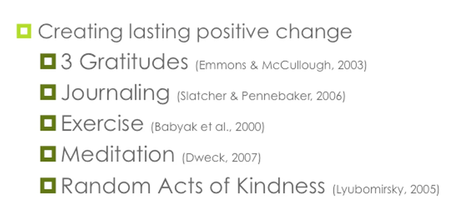 Exercise, meditation, and a daily gratitude practice are among the strategies. Not sure where to start? One of the tips is something you can try right now. Take a moment and jot down three things you are grateful for. Every day for 30 days, jot down three more. Each day, your list must be three new things. You will quickly accumulate a long list and increase your capacity for appreciation. You’re rewiring your brain for happiness.
Check out Achor's book or the 12-minute TED talk for more details and inspiration. What helps you to flip the switch?  It was Arthur Ashe who said, “Start where you are. Use what you have. Do what you can.” It’s been over a year since the death of George Floyd. In the workplace and beyond, more and more people feel the urgency to make positive change, and to do their part for social justice. In my work with leaders, I find that many are informed, motivated, and outraged, but remain unsure of their next steps. The quote from Arthur Ashe is a great one. Start where you are. What could that look like for you? Here are three ways to start where you are...1) Fully leverage your people dataIf you are in an organization that sends out a company-wide survey annually or every other year, you have valuable data right at your fingertips. Most managers will receive their team or business unit data, skim through the results and perhaps review the pluses and deltas with their leadership team. Lately, however, I’ve noticed a trend of managers getting curious. Even when the results are positive, leaders are willing to dig in further and slice and dice the data to uncover patterns. In one case, a leader had received high ratings and still decided to investigate further. To his surprise, when he analyzed the data differently, there was a clear gender discrepancy in a handful of items. He reached out to MCG, and our associates conducted focus groups and engaged with the leadership team to implement specific strategies. The focus group themselves were powerful and appreciated by the staff. Staff were grateful that their leader cared enough to examine their results and get to the core of important issues. (In fact, one participant sent a personal thank-you, grateful for the opportunity to have such an open discussion with the team.) Action: Even if you receive high ratings on an engagement survey, get curious and examine your company-wide data to see where you can improve. 2) Assess the organizational moodOur book club discussion this month focused on the book Reinventing Diversity by Howard Ross. One of the most useful takeaways was Ross’ list of “12 Building Blocks for Culture.” It’s a really powerful list (see an abbreviated list of questions below). In particular, I was captivated by #6 on the list, “organizational mood.” Two questions Ross proposes for this area are:
Mood is similar to “climate,” and emotions are the weather, or what’s going on throughout the organization. As a coach and facilitator, I will be asking about mood to see what comes up for people. It’s an accessible way to enter into what can sometimes be a difficult conversation. Action: Incorporate questions about organizational mood into your 1:1 or skip-level meetings. 12 Building Blocks for Culture With sample questions
3) Be flexibleIn the book, Ross also talks about “cultural flexibility.” It is a systematic approach to incorporating an awareness of diversity and skills related to diversity into everything an organization does. I see this as integration.
Even in mature organizations, it’s important to notice where diversity skills and awareness of diversity is missing. Years ago, one of our MCG team members worked at a university with a big international focus. Many of the biggest majors had global curriculum, more than 20% of the student body had completed high school outside the U.S., and each semester hundreds of students studied abroad. Yet the post office on campus struggled to find the charge code to send a package internationally, and the employee phone lines (this was in the days of long-distance calling codes), did not allow for overseas calls. These were small annoyances, but examples that illustrate how an initiative must reach all corners of an organization in order to truly demonstrate cultural flexibility. Action: Re-evaluate your processes and systems from your customer’s perspective, and notice what aligns (and doesn’t align) to your company’s DEI strategy. This blog post begins with some desk-side Karaoke:
“You gotta know when to hold em…know when to fold them…know when to walk away…know when to run…” (Sorry if it's now stuck in your head the rest of the day!) I'm known in my family to constantly make up words to songs but, for some reason, Kenny Rogers’ The Gambler is one song that I memorized by heart when I was younger and haven't forgotten. I know it's cheesy but I always get the chills when he sings, "...in his final words I found an ace that I could keep." This song has been on my mind lately because of the book we reviewed last month in our CliffsNotes Book Club. We discussed Maria Konnikova’s book, The Biggest Bluff. It’s the story of a researcher who sets out to learn poker—to really master it—and through that experience, we learn a great deal about managing your emotions, bias, self-discipline, decision-making, and more. (A special thanks to Judy Dickinson for the awesome presentation!) Why Poker? Poker, more so than other games, mirrors life. To win, you need a balance of luck and skill, much like in real life. Also, you have to make decisions in poker as you do in real life, with limited information. You can see your own cards, but what are the others holding? I jotted down a few takeaways that are particularly useful for my work with leaders.
To learn more about the book, check out this Atlantic article, this NPR article, and the notes Judy prepared, on the portal. What have games taught you about life? Let’s face it. We’re busy. It’s easy to fall into the autopilot of DOING, and not remembering to check in with yourself to ask – Am I also LIVING my values? Last month’s book club session was on Designing Your Life, by Bill Burnett and Dave Evans. It is the kind of book that speaks to you whether you’re seeking a new job, facing a transition, or just in need of a personal check-in. The authors, Stanford Design Program professors, packed the book full of activities that are both fun and drive tremendous personal insights. (Check out the notes on the CliffsNotes book portal for more info.) Build a Compass One of the activities I found particularly useful is to build a compass to create alignment between what you believe in, and what you are actually doing. (The discussion of 'alignment' made me remember the game Tetris. We get so much satisfaction from creating these continuous lines that stack up so beautifully!) The compass activity is in three parts:
Hypothetically speaking, someone who values fun and connection and wants to create lasting family memories may be out of alignment when she can't manage to take more than two days off (and works for herself) and can't keep up with the laundry let alone plan a family vacation for winter break... you know, just as a hypothetical example. Seriously, though, we all get out of alignment, it's to be expected. These are the types of exercises to help us pause every now and then and get back on track. And it's important to focus on what action you want to take moving forward rather than get caught up on evaluating the past. Maybe select one small change to get back in alignment. What would that look like? After all, you’re a leader in your life—not just in one aspect of your life. Leadership at Work & Beyond
The discussions about designing your life brought me back to how important it is to think about leadership in all domains of life. After all, you’re a leader in your life—not just in one aspect of your life. As I often say, it’s about leadership ‘at work and beyond.’ In working with leaders for decades, I find that this notion really resonates. It’s about being authentic and it’s about finding every opportunity to learn and grow. I rounded up some related posts on this ‘and beyond’ concept. Read on for more:
As always, let me know what resonates. |
AuthorLaura Mendelow |
|
|
©2020. All Rights Reserved. Mendelow Consulting Group, LLC.



